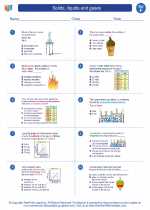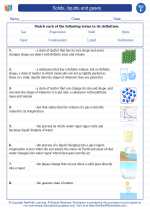Dry Lubricants
Dry lubricants are substances that reduce friction between two surfaces in relative motion without the need for a liquid oil medium. They are used in situations where the use of conventional liquid lubricants is impractical, such as in environments where dust or dirt could stick to the lubricant, or where liquid lubricants are not permitted due to safety or environmental concerns.
Types of Dry Lubricants
There are several types of dry lubricants commonly used:
- Graphite: Graphite is a form of carbon that is highly effective as a dry lubricant due to its low friction properties. It is commonly used in applications such as locks, hinges, and mechanical systems.
- Molybdenum Disulfide: Molybdenum disulfide, or MoS2, is another popular dry lubricant known for its ability to reduce friction and wear in high-pressure and high-temperature environments. It is often used in industrial machinery and automotive components.
- PTFE (Teflon): Polytetrafluoroethylene, commonly known as Teflon, is a synthetic polymer that exhibits excellent lubricating properties. It is used in a wide range of applications, including as a dry lubricant for bearings, gears, and sliding surfaces.
- Silicone: Silicone-based dry lubricants provide good lubrication and are resistant to high temperatures. They are often used in applications where conventional lubricants would attract dirt or dust.
Advantages of Dry Lubricants
Dry lubricants offer several advantages over traditional liquid lubricants, including:
- Resistance to dust and dirt buildup
- Ability to function in extreme temperatures
- Reduced need for frequent reapplication
- Compatibility with materials that may be sensitive to liquid lubricants
- Minimal environmental impact
Study Guide
To study dry lubricants, it's important to understand their properties, applications, and advantages. Here are some key points to focus on:
- Define dry lubricants and explain their purpose.
- Identify and describe at least three types of dry lubricants, including their unique properties and applications.
- Compare and contrast the advantages of dry lubricants over traditional liquid lubricants.
- Research and present a case study or real-world application of dry lubricants in a specific industry or technology.
- Discuss the environmental impact of dry lubricants compared to liquid lubricants.
By mastering these concepts, you will gain a comprehensive understanding of dry lubricants and their significance in various engineering and industrial applications.
.◂Science Worksheets and Study Guides Sixth Grade. Solids, liquids and gases

 Activity Lesson
Activity Lesson
 Worksheet/Answer key
Worksheet/Answer key
 Worksheet/Answer key
Worksheet/Answer key
 Worksheet/Answer key
Worksheet/Answer key
 Vocabulary/Answer key
Vocabulary/Answer key
 Vocabulary/Answer key
Vocabulary/Answer key
